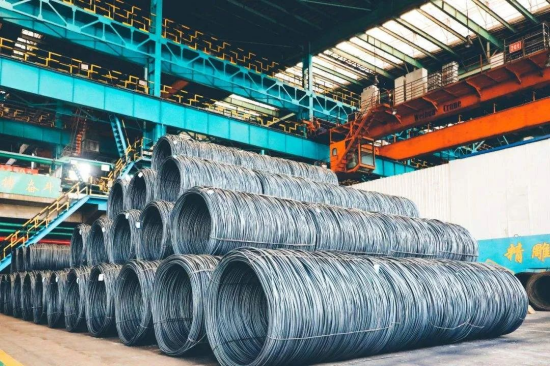【Steel】Crude Oil Plunges 5%! Macro Pressure Mounts—Will Steel Prices Decline Further Tomorrow?

Graphite electrodes are key materials for EAF steelmaking, mainly used for arc heating. With excellent conductivity and high-temperature resistance, they are crucial for improving EAF production efficiency and quality.
【Steel】Crude Oil Plunges 5%! Macro Pressure Mounts—Will Steel Prices Decline Further Tomorrow?
During the May Day holiday, multiple market highlights emerged. Internationally, major oil-producing countries plan to increase production again in June, with Saudi Arabia and Russia committing to a combined daily increase of 411,000 barrels. On May 5th, WTI crude plunged 5% in early trading. Additionally, U.S. April employment data exceeded expectations, with non-farm payrolls increasing by 177,000, slightly reducing market expectations for a Federal Reserve rate cut this year.
Domestically, during the first three days of the holiday, regional travel volume reached 920 million, up 5.7% year-on-year, indicating robust tourism consumption. On the industrial side, steel mills maintained production during the holiday, with hot metal output continuing to rise and market prices remaining mostly stable. As the holiday concludes, global macro uncertainties require digestion, and price volatility is expected to intensify. Meanwhile, industrial fundamentals remain largely unchanged from before the holiday. What lies ahead for the post-holiday steel market?

Factors Impacting Steel Prices
1. Hot Metal Output Reaches 2.4542 Million Tons
According to surveys of 247 steel mills: blast furnace operating rate stood at 84.33%, unchanged week-on-week but up 3.73 percentage points year-on-year. Blast furnace capacity utilization reached 92%, up 0.45 percentage points from the previous week and 5.76 percentage points higher year-on-year. Mill profitability rate dropped 1.3 percentage points to 56.28%, though still up 3.47 percentage points year-on-year. Daily average hot metal output rose by 10,700 tons to 2.4542 million tons.
No new restarts or shutdowns occurred in the past week. The increase in hot metal production is mainly due to continued profitability at mills, which encouraged restarts. Furthermore, mandated maintenance has not yet been enforced, allowing mills to operate at full capacity. With most mills already at peak output, short-term room for further increase in hot metal is limited. While current hot metal output supports raw material prices, expected maintenance in mid-to-late May may reduce output, weakening cost support and putting downward pressure on steel prices amid the seasonal demand transition.
2. U.S. April Non-Farm Payrolls +177,000
On May 2 (Friday), the U.S. Bureau of Labor Statistics reported a seasonally adjusted increase of 177,000 non-farm jobs in April, beating the forecast of 138,000. March's figure was revised down from 228,000 to 185,000. February's figure was also revised down by 15,000 to 102,000. Over the past six months, U.S. job growth has averaged 193,167 per month.
Despite global tariff pressures, U.S. employment data remained resilient in April. Bond yields rose and the dollar pared losses, while U.S. equities strengthened. The market now believes that while April's data is positive, underlying job growth is cooling and the effects of tariffs will surface in the coming months. The market expects the Fed to cut rates four times this year, lowering the total expected cut from 90 basis points to 85. Overall, stronger U.S. data and delayed rate cut expectations may suppress dollar-denominated commodities. For China, with the Fed staying put, domestic policy may need to further rely on structural tools.
Conclusion
In summary, during the May Day holiday, overseas macro developments were largely bearish: the sharp drop in oil prices and delayed U.S. rate cuts are expected to weigh on global commodities. Domestically, consumption remained strong and government subsidies supported spending. On the industrial front, hot metal production continued rising, but with more maintenance scheduled in mid-to-late May, raw material cost support may weaken. Thus, after the holiday, steel market fundamentals may remain subdued. Coupled with conflicting macro signals, market volatility is set to increase. Steel prices are expected to edge down tomorrow by 0–20 RMB/ton.
Feel free to contact us anytime for more information about the EAF Steel market. Our team is dedicated to providing you with in-depth insights and customized assistance based on your needs. Whether you have questions about product specifications, market trends, or pricing, we are here to help.
No related results found








0 Replies